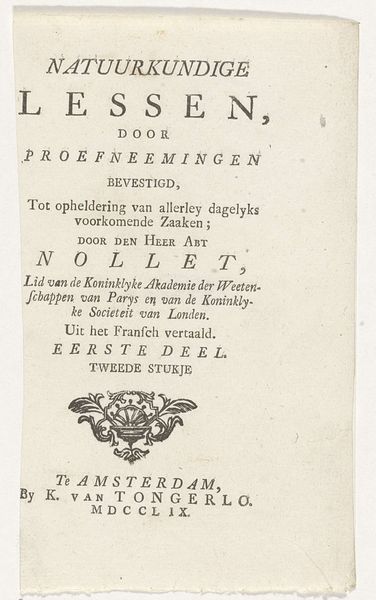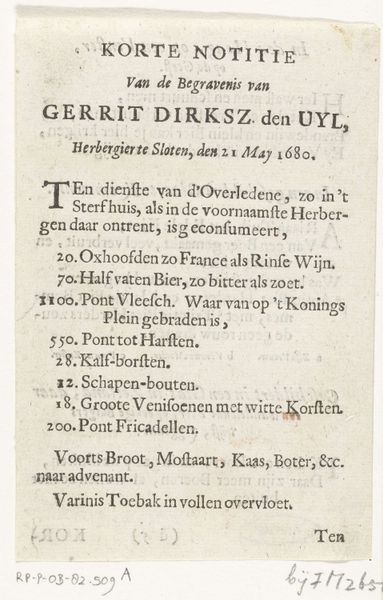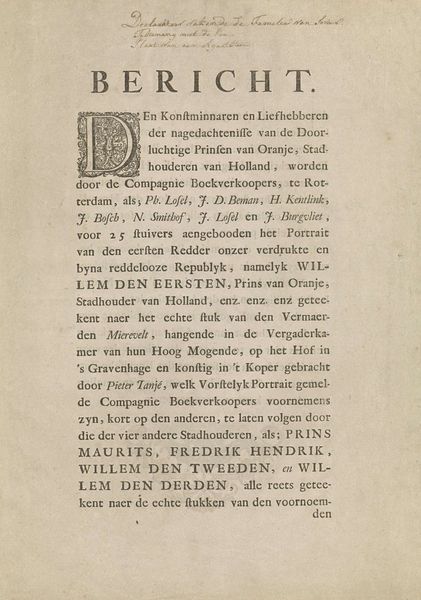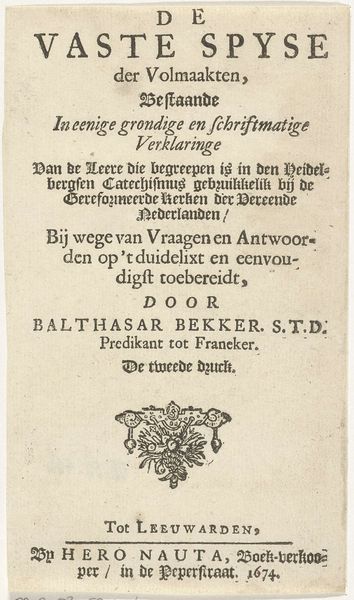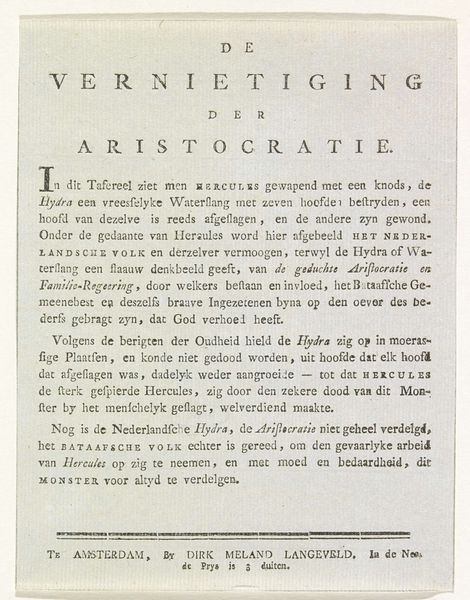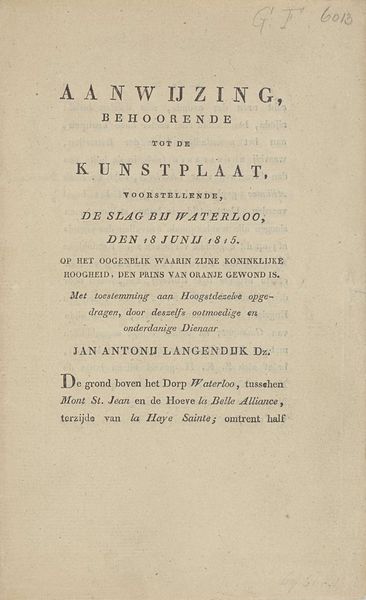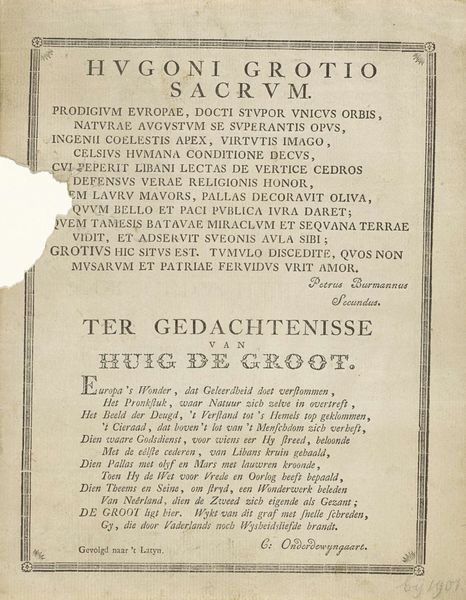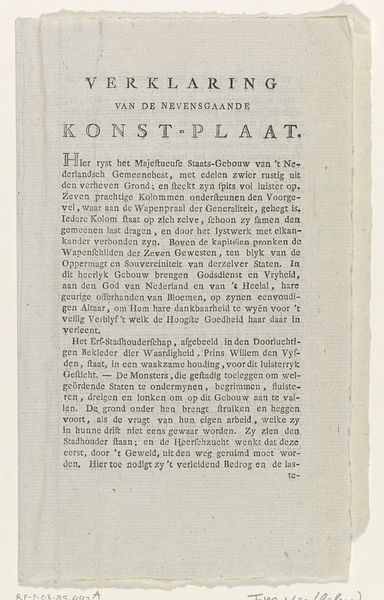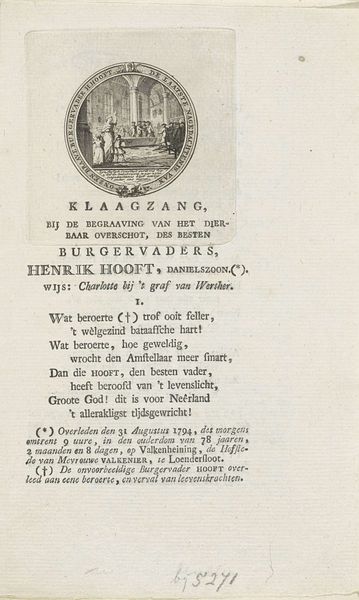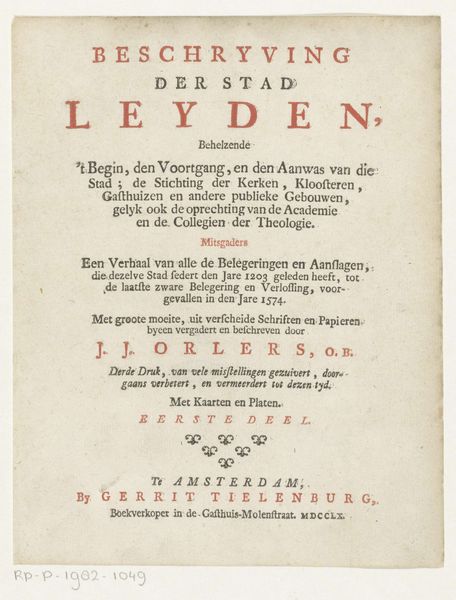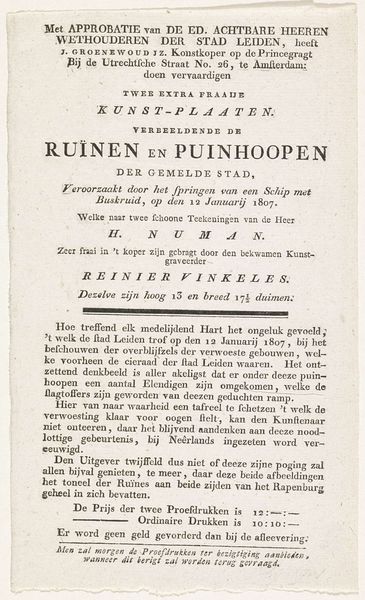
Uitleg van de prent met het monument voor J.M. baron von Kropff, 1793 1793
0:00
0:00
print, paper, engraving
# print
#
paper
#
text
#
romanticism
#
history-painting
#
engraving
Dimensions: height 168 mm, width 210 mm
Copyright: Rijks Museum: Open Domain
Curator: Before us is an engraving from 1793 by Johannes Groenewoud Jansz, titled "Uitleg van de prent met het monument voor J.M. baron von Kropff," now residing in the Rijksmuseum. Editor: Stark! My initial impression is of severe, even rigid order, and almost clinical, with a lot of detailed lettering. There is a distinct austerity here that mirrors the supposed intent to praise this baron. Curator: The text functions as an explanation of the allegorical plate. It describes the erection of a memorial to the "glorious passing" of the courageous Captain J.M. Baron van Kropff. What I find compelling is how it blends public heroism with private grief, evidenced in the capitalization of key virtues within its printed narrative. Editor: Absolutely. Consider the iconography. The text guides us to a grave needle or obelisk adorned with the Captain's portrait. Above that, a laurel-crowned skull representing, presumably, immortal fame, along with the Constitution and Patriotism mourning death. This piece is layering symbolic meaning, it is far from just the printing on paper, wouldn't you agree? It is like a verbal key unlocking an emotional landscape tied to cultural values. Curator: The engraving process itself, though seemingly simple, held incredible weight. Reproducing images for mass consumption enabled the widespread dissemination of not only political and cultural values but also news events and historical narratives, it served the purpose of solidifying social memory and moral instruction during revolutionary and restoration periods. Editor: It all points to a collective memory-making effort! Notice the smaller details too, like the siege of Klundert, or the recovery of the body. Those contextual clues embedded within the central imagery reinforce this idea of shaping the public's remembrance of this Baron. I see Fame adorning the tomb with civic and laurel wreaths – a classic Roman gesture asserting the continued veneration of civic virtue, right? Curator: Precisely. And while appreciating the classical nods and complex layers, one mustn’t dismiss its very tangible function of circulating a very specific set of political ideals regarding military leadership and national sacrifice. It embodies not just symbolic weight, but social messaging, designed to cement public allegiance. Editor: Looking closer reveals the depth of this small work, a reflection on mortality and values – and a great display of potent image-making with enduring echoes.
Comments
No comments
Be the first to comment and join the conversation on the ultimate creative platform.
